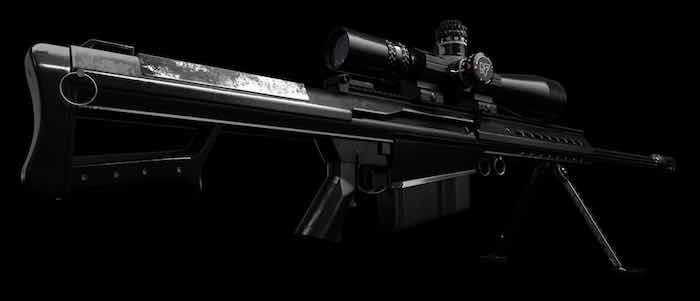Michael Fumento
Factual · Powerful · Original · Iconoclastic
Gunshot, not Lethal Injections, Is Most Humane
May 03, 2017 · Michael Fumento · Canada Free Press
Lethal injection executions, back in the news, just aren’t working. For a variety of reasons. While they are bloodless (so is strangulation, starvation, and being broken on the wheel), it appears they often are not painless. They most certainly are not quick, sometimes taking hours. They arguably violate the Hippocratic Oath in having a doctor perform them, yet you hardly want an amateur to perform them. And drug companies don’t want their products associated with causing death. Go figure!
So that’s it, right? The U.S. is out of tricks. (Canada abolished the death penalty long ago.) Or so capital punishment opponents would like us to think, as a backdoor means of ending the entire institution in the U.S. But while there may be serious moral grounds for ending executions to consider, it’s not logical to ban it strictly on grounds that there’s no form that’s totally painless, bloodless, and quick. Presumably the victims of the perpetrators did not die in such a manner.
Still, executions in an advanced society should be as humane as possible. And there is a method that incredibly is allowed by only two states—precisely because it’s the most humane.
It’s death by gunshot. And its virtues drive capital punishment opponents nuts. “Reinstatement of executions by firing squad would constitute an embarrassing step backward,” National Association of Criminal Defense Lawyers, President Theodore Simon said two years ago. “It’s inconsistent with the ‘evolving standards of decency that mark the progress of a maturing society,’ he said, and violates the 8th Amendment prohibition of cruel and unusual punishment.
Curious he doesn’t even seem to know that in 1878 the Supreme Court ruled firing squads did not violate the 8th Amendment. The rest is just sophistry. If you have to die violently, death by gunshot is the way to go. And yet the traditional firing squad can be improved upon.
When a firing squad execution goes wrong it’s inherently due to movement on either or both sides. Either the prisoner moves or the shooters, from lack of skill or nervousness, miss the mark. To reduce this you can have more shooters, but it’s still not foolproof.
The better method comprises strapping the subject into a chair too tightly to even wiggle while a SINGLE weapon is also locked in on the heart using a rifle rest. Neither target nor firearm can move. Probably the ideal weapon would be the M-82A1 sniper rifle, using.50 caliber BMG ammunition. That means it’s a half inch wide.
When I saw that rifle in Iraq I was told it was primarily for destroying the engine block of a rushing vehicle suspected of carrying explosives. The round would thoroughly rupture the heart, with presumably a split second of pain and instant unconsciousness followed quickly by brain death from lack of oxygen.
Yes, there’s some blood. Which nobody need see but the shooter (and even the shooting can be triggered remotely) and those who handle the body. (Hanging, conversely, produces no blood—unless the subject is weighted too heavily in which case the head pops off. Not enough and the subject strangles. Terrific.)
Which would subjects prefer? It’s not academic to them. The last two men executed in the U.S. had a choice between hanging and firing squad, Gary Gilmore and Ronnie Garner. Both chose gunshot. As Garner explained, “It’s so much easier…and there’s no mistakes.”
SUPPORT FROM THE HIGH COURT
In February, the Supreme Court rejected an appeal from an Alabama prisoner who argued that lethal injection violated the Constitutional prohibition against cruel and unusual punishment; like Gilmore and Garner he wanted a firing squad. The court had to reject that, because Alabama isn’t one of those two states that allows it. But Justice Sonia Sotomayor, in a furious and lengthy dissent, made the case for gunshots. “In addition to being near instant, death by shooting may also be comparatively painless,” she wrote. “Condemned prisoners . . . might find more dignity in an instantaneous death rather than prolonged torture on a medical gurney.”
She also expressed in, well, rather graphic detail the horrors not just of botched executions with the other forms of capital punishment used in the United States but indeed those that proceed normally, such as the electric chair and the gas chamber. And she cited the data on botched executions. There have only been 134 by firing squad since 1870, according to one source, but the number botched appears to be zero.
Locking in both prisoner and weapon would ensure zero.
Yet curiously, only Utah and Oklahoma even allow death by firing squad and then only as a back-up to lethal injection. They’ll get this more humane form only over the dead bodies of capital punishment foes, who quite literally see agonizing deaths as serving their purpose. Gilmore had to fight off the ACLU and the National Association of Colored People get his preferred method of execution. He twice attempted suicide during the drawn-out process. Now that’s cruel and unusual.
Capital punishment in the US needs to be debated on its own merits and may eventually go the way of Canada. Until then, a humane society needs to choose the most humane method of employing it.
